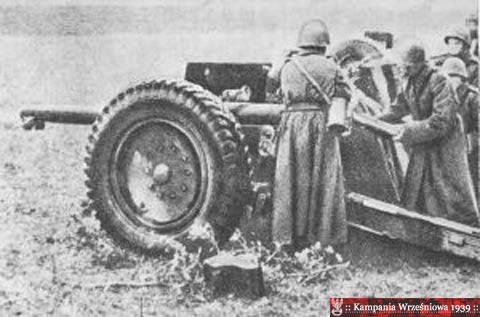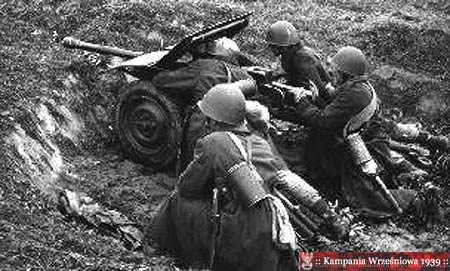Panzercracker
Active member
Today the Western schools learn extensively about Normandy campaign, the Ardennes, even the invasion of France.
The German-Polish war of 1939 is glossed over as "lighting victory" half-truths and outright lies are being repeated to show Poland as then weak and defencless, partially to justify the fact that Poland was betrayed by its allies in 1939 and sold out in 1945 and partially out of chauvinism because Polish army despite its inadequacies in armament was in 1939 the most powerfull military organization of the Western allies which it has proven during the month long campaign.
This thread is devoted to dispelling myths about the Polish Army of 1939 and introduce you to the true power, potential and achievements of this force and proving that Germany was succesfull as it was only due to the invasion of the Red Army.
First we shall present the weapons of the Polish land forces and of the Polish airforce.
The Polish military was a conscript force with a highly professional core, during the 1939 September campaign Poland fielded one milion troops.
The Polish infantryman was the opposite of his French ally, highly motivated he would refuse to back down even against overwhelming odds, commanded by professional and skilled junior officers, he did not enjoy the heavy artillery, armor and air support of his Western compatriots but made up for it by raw skill, determination and some of the most advanced infantry weapons in the world making him by far the most lethal opponent the Wehrmacht soldier faced during the entire length of the World War 2 (which i will elaborate upon in the further sections of this thread).
I present to you the Polish infantryman (and cavalryman) and their weapons.
Polish infantry as seen in September 1939:








The German-Polish war of 1939 is glossed over as "lighting victory" half-truths and outright lies are being repeated to show Poland as then weak and defencless, partially to justify the fact that Poland was betrayed by its allies in 1939 and sold out in 1945 and partially out of chauvinism because Polish army despite its inadequacies in armament was in 1939 the most powerfull military organization of the Western allies which it has proven during the month long campaign.
This thread is devoted to dispelling myths about the Polish Army of 1939 and introduce you to the true power, potential and achievements of this force and proving that Germany was succesfull as it was only due to the invasion of the Red Army.
First we shall present the weapons of the Polish land forces and of the Polish airforce.
The Polish military was a conscript force with a highly professional core, during the 1939 September campaign Poland fielded one milion troops.
The Polish infantryman was the opposite of his French ally, highly motivated he would refuse to back down even against overwhelming odds, commanded by professional and skilled junior officers, he did not enjoy the heavy artillery, armor and air support of his Western compatriots but made up for it by raw skill, determination and some of the most advanced infantry weapons in the world making him by far the most lethal opponent the Wehrmacht soldier faced during the entire length of the World War 2 (which i will elaborate upon in the further sections of this thread).
I present to you the Polish infantryman (and cavalryman) and their weapons.
Polish infantry as seen in September 1939:















































































